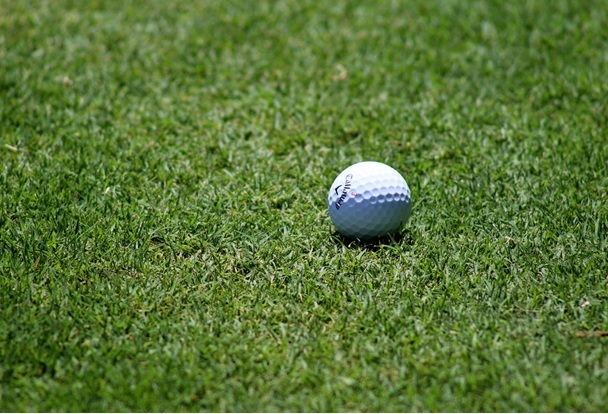How to Tell If a Golf Shaft for a Driver Is Too Stiff
Posted by Dallas Golf on 11 Apr 2022

Trying to choose a golf shaft online is really difficult, and we don’t suggest trying to do so without soliciting advice from a professional first. There are too many factors at play, including but not limited to weight, length, kick point, torque, materials and construction, and of course flex.
Now, it can be tempting to try to progress to stiffer shafts as your skills as a golfer improve. After all, it’s not classified information that skilled golfers tend to prefer shafts with stiffer shaft flexes because they are less forgiving and more precise.
In a sense, this is true. Experienced golfers tend to prefer stiffer shafts because they are more predictable and enable higher clubhead speeds, accurate golf ball flight, and control over shot dispersion.
But stiffer shafts are not a cure-all for swing errors and bad habits. Nor does skill progression automatically mean that you should upgrade to a golf shaft for a driver that has a stiffer flex. You might, but this is not necessarily the case.
Let’s go over some common shot errors that can be caused by a golf shaft that is too stiff, before explaining.
Struggling with Distance
There are a lot of factors that can impact your ability to reach certain distances with your golf swing, and shaft stiffness is literally only one of them.

That said, it is a big one. For players with faster swing speeds, stiff shafts can be a good thing. They enable the highest clubhead speeds and thereby give a boost to the golf ball, making it easier to reach higher speeds and hit the ball farther.
However, for players with slower swing speeds, playing with a stiffer golf shaft is not the way to go. The reason for this is that a stiffer shaft will ultimately result in a lower clubhead speed than a more flexible shaft (for players with slower swing speeds, that is). The ultimate result is that the player will struggle to hit the ball farther.
Slower clubhead speeds will frustrate energy transfer through the club head, making it more difficult for the player to hit the ball farther. Also, many stiffer shafts tend to have higher kick points that deliver lower spin and launch, which, in the absence of higher clubhead speeds, will also have a negative impact on distance.
There’s more - stiffer shafts tend to be less forgiving, so unless you’ve developed the skills to “swing” them properly, you could have issues with accuracy as well. A slight discrepancy with where or how high or low the clubface contacts the ball can be badly exaggerated by a golf shaft for a driver with higher shaft flex, resulting in a variety of shot errors.
Hitting Fades
A fade is a specific type of shot error that occurs when the golf ball flight curves to the right, away from the player, after a swing. It could also start as a straight shot and then curve to the right in flight.
Now, to be fair, controlling ball flight to combat wind, spin, course topography, or even to clear obstacles, can be a good thing. It can be a very good thing, in fact, and some professionals, use this ability to their advantage.
The difference is, that hitting fades when you don’t want to is not a good thing. It will cause you to lose control of shot dispersion and ruin your accuracy.
It’s also important to note that a variety of things can cause shot fades. Bad form, gripping the club too tightly, and other factors can cause fades. So shooting a fade doesn’t necessarily mean your golf shaft is too stiff.
However, in this instance, playing with a stiffer shaft than you’re used to can cause you to develop a propensity to swing in such a manner that the golf club face hits the ball “open.” This means the clubface will hit the ball angled slightly off to the right, away from the golfer, causing the shot to fade off to the right.
With training, it’s possible to correct this error - or you can just play with a shaft that is better suited to your swing speed and abilities.
Shaft Feels “Dead” or “Unresponsive”
Another potential problem with golf shafts for drivers that are too stiff is an issue with responsiveness.
Whatever shaft you choose - whether an iron shaft, a driver shaft, a steel shaft, or a graphite shaft - should feel responsive and afford you feedback.
Some golfers feel that stiffer shafts are less responsive and don’t afford the right amount of feedback they need to improve their swings. The stiffer the shaft, the higher the frequency of vibrations of feedback will be, and the harder to interpret.
Depending on how stiff the shaft is, it can be impossible to read them, which will ultimately result in an unpredictable shaft that causes you to miss your target or shoot fades without even telling you why.
Experienced golfers have the opposite problem with shafts that are not stiff enough. To them, these shafts vibrate too much or even feel whippy - which to them, is frustrating.
But in this instance, playing with a shaft that is too stiff and doesn’t offer up good feedback can only hurt you in the long run. It’s one of the signs to look out for if you’re reevaluating your current shaft and thinking you need a new one. If it feels dead or unresponsive, it might be too stiff!

There’s No Shame in Swinging a Shaft with a Higher Flex
To sum it all up, just like plating with a heavier shaft, a shorter shaft or a longer shaft, or even a shaft with a high kick point can harm your swing, so too can playing with a shaft that’s not well-paired to your swing speed and experience.
In fact, players that have slower swing speeds actually benefit from playing with more flexible shafts. More flexible shafts offer better feedback, are more forgiving, and enable players without high swing speeds to develop higher clubhead speeds for greater distance.
Not every player needs a tour-spec ultra-stiff golf shaft for a driver that delivers low launch and low spin. In some cases, it can hinder performance. For some, more flexible golf shafts for drivers are better.
But choosing a golf shaft isn’t something you should do on your own. You should work with a professional trainer to observe your swing and make personal adjustments and recommendations. Come into our shop for club fitting services for the full experience - and give us a call ahead of time at 800-955-9550 if you need more information.
